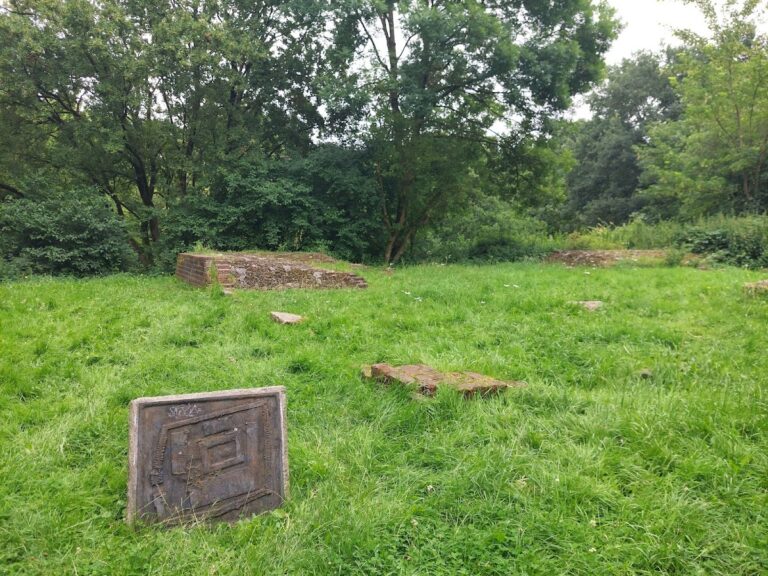Burg Elmendorf: A Medieval Fortification in Bad Zwischenahn, Germany
Visitor Information
Google Rating: 4.2
Popularity: Very Low
Google Maps: View on Google Maps
Country: Germany
Civilization: Unclassified
Remains: Military
History
Burg Elmendorf is a medieval fortification located in the municipality of Bad Zwischenahn, Germany. It was originally constructed by early medieval Germanic settlers during the 9th century. The site formed part of the broader landscape of fortified settlements emerging in this region of Lower Saxony during the early Middle Ages.
Archaeological findings reveal that in the 9th century, a fortified farmstead stood here, surrounded by wooden palisades and containing several small buildings. This early settlement was destroyed toward the end of the 10th century but was rebuilt around the year 1000. The transition from this fortified farmstead to a more complex castle structure likely occurred during the 11th century when the first motte, or earthen mound, was constructed. However, this initial defensive mound was destroyed by fire around 1100, prompting new phases of construction.
The site is first explicitly mentioned in historical records in 1134, when a castle chapel dedicated to St. Bartholomew was consecrated by Archbishop Siward. Around this time, the castle served as the residence of Friedrich von Anforde. The fortress was associated with the noble Oldenburg family, notably Count Egilmar I, documented from 1091, and his descendant Egilmar II. A significant family alliance was formed when Egilmar II’s daughter married Friedrich von Anvorde in the early 12th century. Later, local ministerial lords bearing the name von Elmendorff were connected to the stronghold, with Diederich von Elmendorpe recorded as a witness in 1287.
By 1331, Burg Elmendorf and its manor were exchanged for other properties along the Hase River, becoming possessions of the Counts of Oldenburg. This change marked the castle’s integration into larger territorial holdings. Subsequent archaeological investigations in the 20th century, particularly by Dieter Zoller in the 1960s, established that the earth mounds forming the castle’s core were man-made defensive structures built during the medieval period and not prehistoric burial sites as previously thought.
Remains
Burg Elmendorf occupies an area of about 1.2 hectares, enclosed by a system of defensive ditches. The main features are three large, artificial earthen mounds known as mottes, constructed through a sophisticated combination of timber framing and earthworks. These mounds served as elevated platforms for wooden buildings and defensive towers.
The western mound is the largest, measuring between 50 and 55 meters in diameter and rising approximately seven meters high. Its flat summit, roughly 22 by 25 meters, once supported a twelve-sided (dodecagonal) wooden tower about 12 meters across. In the early 13th century, this tower was replaced by a half-timbered house, equipped with a hearth for heating and cooking. The edges of this plateau were enclosed by a wooden palisade, enhancing its defensive capabilities.
On the eastern mound, slightly smaller with diameters ranging from 35 to 45 meters and a height around five meters, a similar tower stood. However, its structure was substantially altered in modern times, notably during 1943 when an air-raid shelter was installed, severely disturbing the site’s historic fabric.
The smallest mound functioned as the outer bailey, a defensive courtyard or enclosure outside the main fortifications. Excavations in this area recovered remnants of the early fortified farmstead from the 9th century, including palisades and evidence of specialized crafts. These findings suggest a community engaged in activities beyond mere agriculture, indicative of a settlement with varied functions and a degree of organization.
The castle chapel dedicated to St. Bartholomew, consecrated in 1134, was situated between the mottes near the edge of the Zwischenahner Meer lake. This religious building linked the castle’s secular and spiritual domains, emphasizing its role as both a noble residence and a center for worship.
Today, the earthworks of Burg Elmendorf remain visible, with the mounds preserved in the landscape, although some wooden structures are no longer extant. The defensive ditches and mound forms provide insight into medieval construction techniques and the site’s evolving defensive needs over several centuries.







